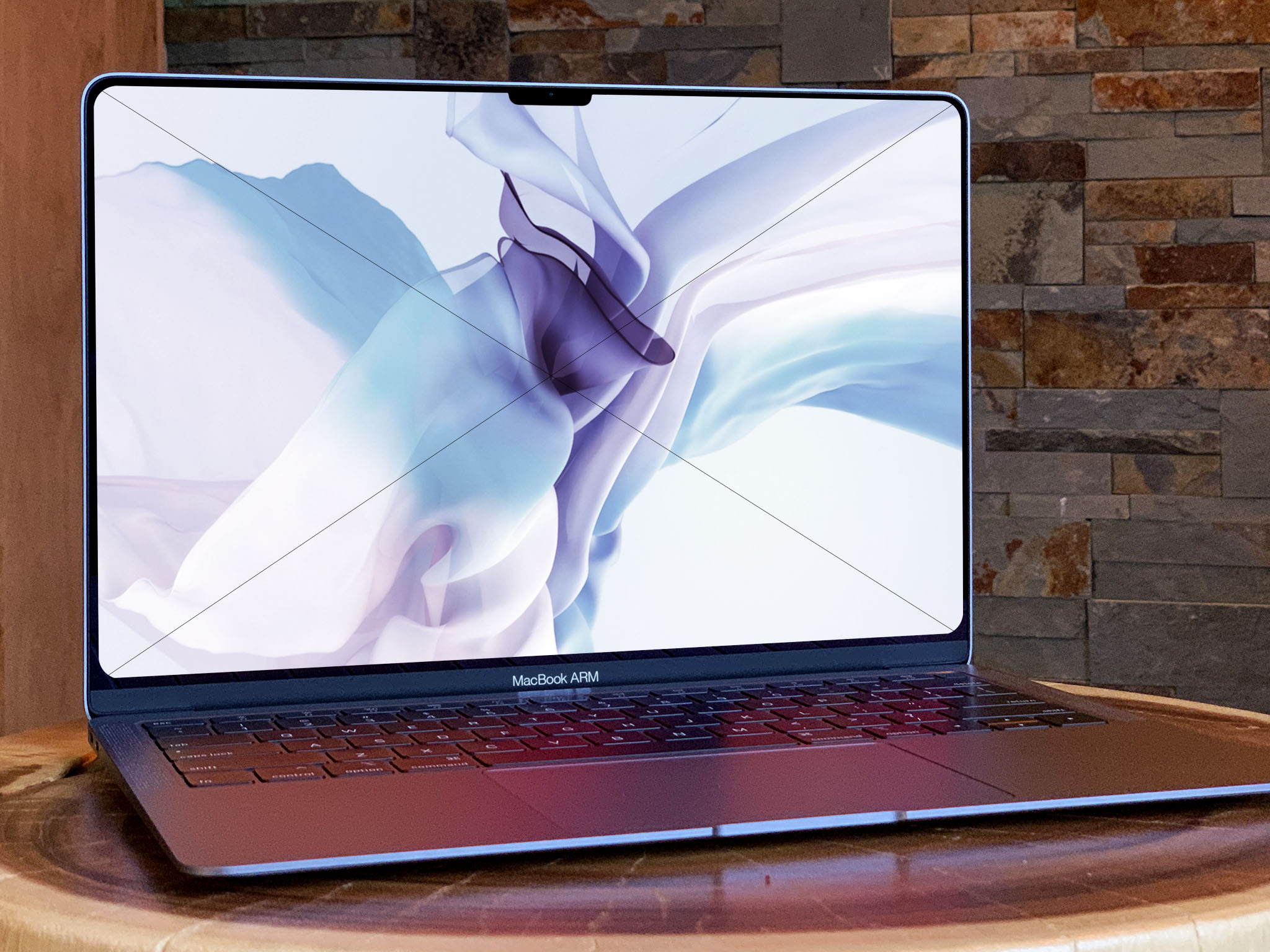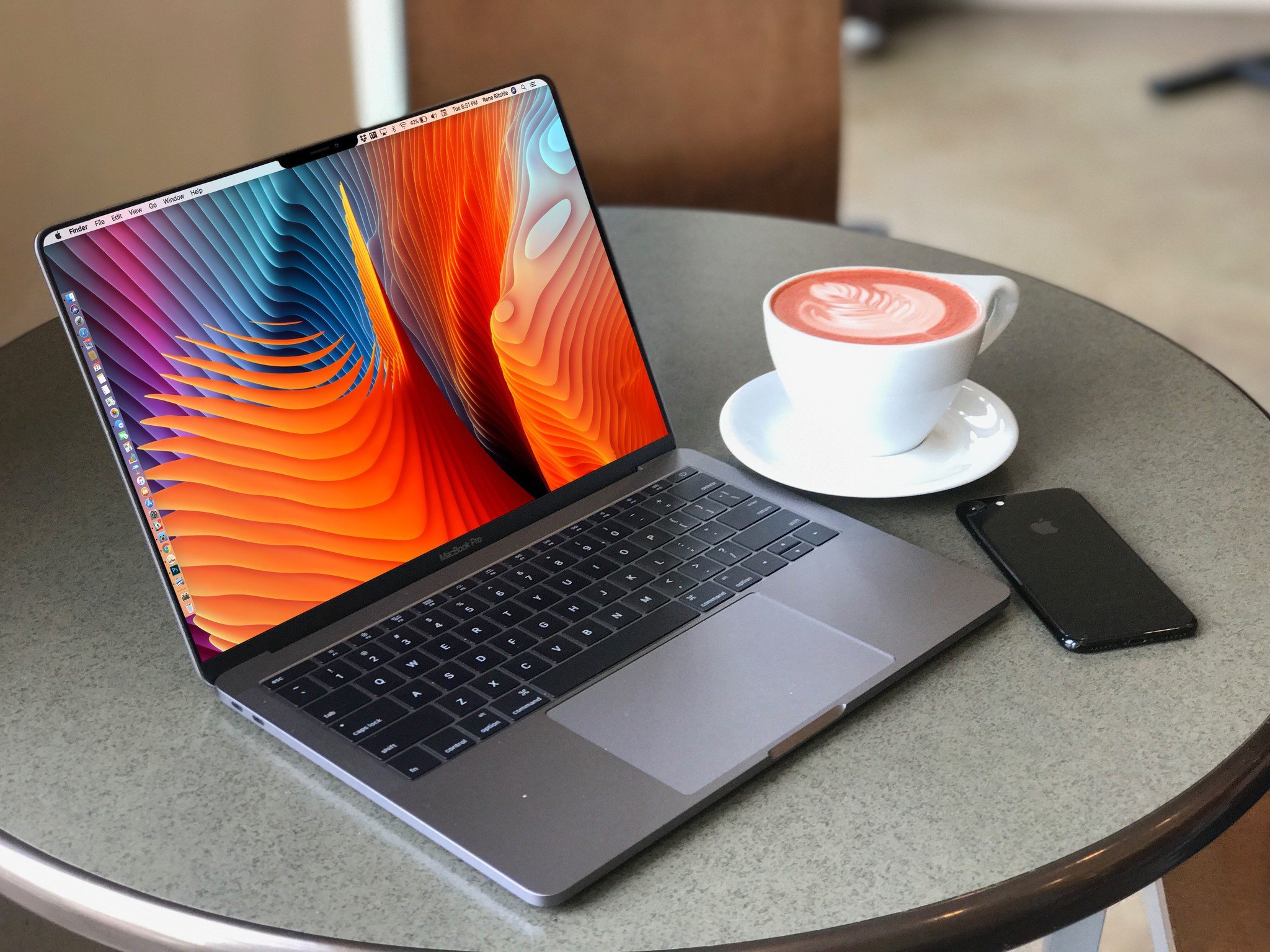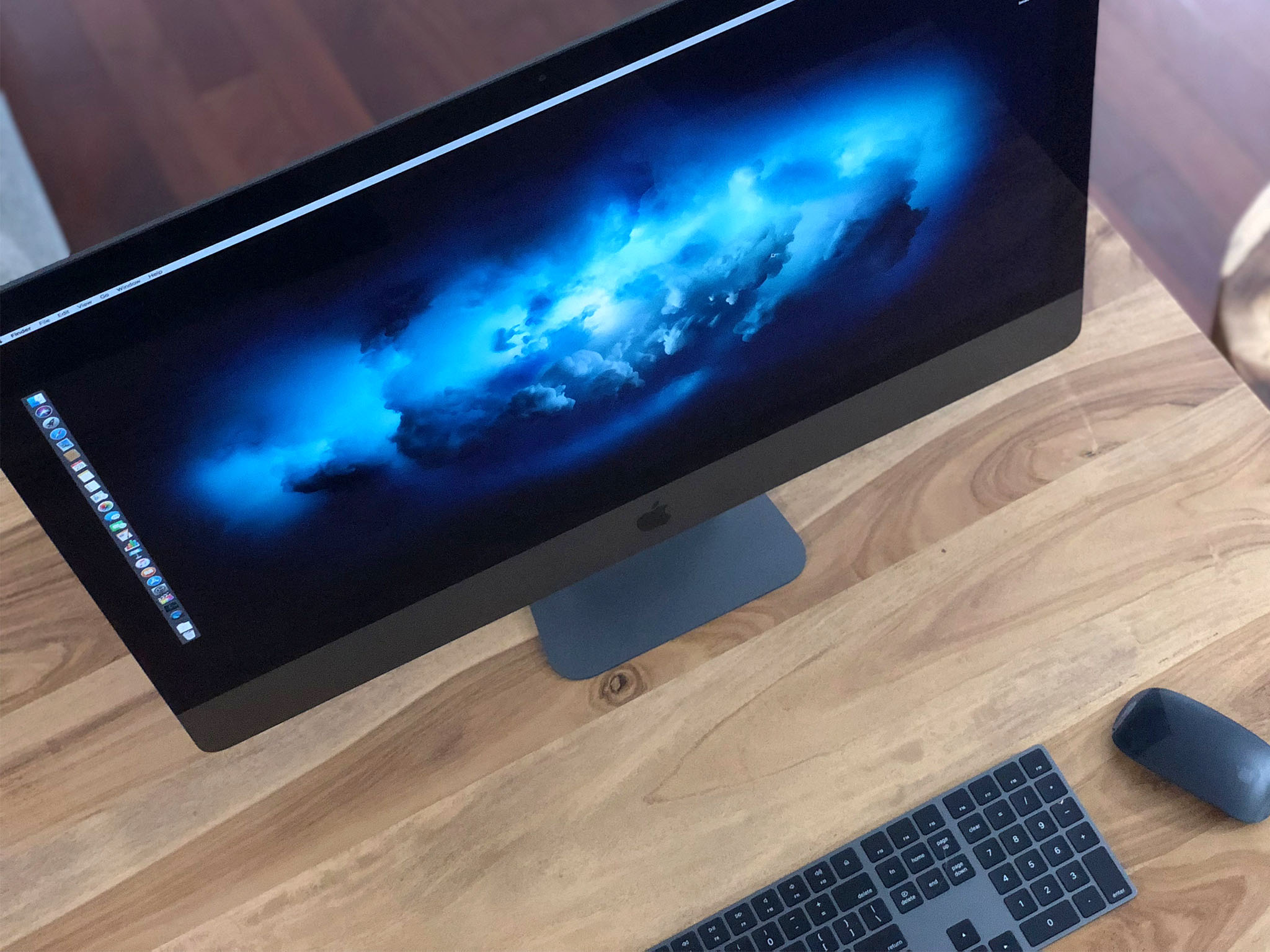How the Mac will go ARM

In 2005, Steve Jobs announced the Mac's hardware transition from PowerPC to Intel, just a few years after an equally momentous software transition, from the classic OS to OS X, now macOS, that began in 2001. Transitions are sort of Apple's thing.
Watch the video version. Seriously. It's got way more cool stuff in it.
Prior to that announcement,Apple had Mac-on-Intel running in the labs for years. Marklar was the codename and the gist was PowerPC was no longer a reliable platform and no longer providing not just the power but the efficiency Apple needed for the next many generations of Macs. So, the Intel transition happened.
Rumors have been percolating for years already about a similar transition, this time from Intel and to ARM. By many accounts, Apple has had MacBooks on ARM, running both iOS and macOS since, well, there was any ARM to run them on.
For a long time, Apple seemed content to just dangling over Intel's head like a silicon sword of Damocles, pressing them to keep on target and on pace.
But, as Apple's chipset prowess has grown and Intel's fortunes have faltered, the buzz around another great Mac transition has gotten louder again. Not an iOS clamshell or desktop box, mind you, interesting as both those products might be. But proper macOS running on proper Apple silicon.
And since the iPad Pro shipped with the Apple A12X, a desktop-as-in-i7-class processor, the buzz has become deafening.
Master your iPhone in minutes
iMore offers spot-on advice and guidance from our team of experts, with decades of Apple device experience to lean on. Learn more with iMore!
The Rumors
Now, there have been a good number of Mac on ARM rumors over the years but they've never been as spot-on-reliable as recent iPhone rumors. Just the opposite, in fact.

SemiAccurate, back in May of 2011, the same year Apple launched the 2nd generation MacBook Air that went on to define and inspire the modern age of ultrabooks:
So short story, x86 is history on Apple laptops, or will be in 2-3 years. In any case, it is a done deal, Intel is out, and Apple chips are in. The only question left is if they will use their own core, a Samsung core, or the generic ARM black box. My bet is on generic for the first round, with a custom uncore, and moving to progressively more proprietary features with each successive generation.
Obviously, that didn't happen. And that's the case with a lot of ARM-based Mac rumors. But I think it's important to go through the basic timeline.
Mac Otakara, the same month.
An anonymous source told more information, Apple already made test equipment of Thunderbolt MacBook Air driven by A5 processor.According to this source who saw live A5 MacBook Air actually, this test machine performed better than expected.
What they may have been referencing is the prototype hardware I mentioned previously.
In August of 2011, a paper was published by the Delfte University of Technology, titled Porting Darwin to the MV88F6281, subtitled ARMing the Snow Leopard. The author, T.F. Schaap, wrote in the abstract:
I worked in the Platform Technologies Group for 12 weeks, porting Darwin to the MV88F6281. The MV88F6281 is an ARMv5 compatible processor, with the custom Sheeva core at its heart. The goal of this project was to get Darwin building and booting into a full multi-user prompt.
Macbidouille, translated by Google, from May of 2014:
At the hardware level it would have advanced prototypes of several ranges of machines:iMacs that have 4 or 8 quad-core ARM 64 processors, Mac minis that would have four ARM 64 four core processors, a 13 "notebook with also 4 or 8 quad-core ARM 64 processors.These machines would all be accompanied by a new keyboard incorporating a large Magic Trackpad.
The new keyboard and trackpad launched almost a year later with the 12-inch MacBook, but that machine, of course, used Intel CoreM, not ARM.
At the time, I wrote the following on iMore:
ARM-based Macs, touchscreen Macs, iOS Macs, Retina Macs... Apple prototypes pretty much anything and everything any reasonable person would expect them to. A thousand no's for every yes requires a very high prototype to product ratio, after all...
Retina Macs have since shipped, the others, not so much.
Kuo Ming-Chi, from January of 2015, still a couple of months before that launch, via MacRumors:
Apple may launch Mac products that use own AP in next 1-2 years. This prediction is based on the assumption that Apple's self-developed AP performs at a level between Intel's Atom and Core i3 and is good enough for Mac. Using self- developed AP can help Apple better control the timing of Mac launches and Mac product features.
In hindsight, it seems like Kuo underestimated how fast Apple could push A-series performance but overestimated the rapidity of any switch to ARM-based Macs.
In April of 2017, Apple held it's now famous Mac Pro mea culpa, and as part of it, threw cold water on the idea of ARM-first Macs.
Ina Fried, writing for Axios:
The company has no plans for touchscreen Macs, or for machines powered solely by the kind of ARM processors used in the iPhone and iPad. However, executives left open the possibility ARM chips could play a broader role as companion processors, something that showed up first with the T1 processor that powers the Touch Bar in the new MacBook Pro.
While Apple did test and did not like touch screen Macs, here it's important to remember the first law of Metaphysics… I mean Apple product marketing: nothing unannounced exists.
Cheng Ting-fang, writing for Nikkei back in September of 2017
Two industry sources say that Apple is trying to cut its dependence on Intel when it comes to notebook chips and instead build those using ARM architecture, referring to the SoftBank-controlled British chip designer."Notebooks are becoming thinner, while consumers are demanding better mobility and longer battery life. That gives ARM's architecture, which is known for its power efficiency, a very good opportunity," a chip industry executive said.
Ian King and Mark Gurman, writing for Bloomberg, back in April of this year:
Apple Inc. is planning to use its own chips in Mac computers beginning as early as 2020, replacing processors from Intel Corp., according to people familiar with the plans.The initiative, code named Kalamata, is still in the early developmental stages, but comes as part of a larger strategy to make all of Apple's devices -- including Macs, iPhones, and iPads -- work more similarly and seamlessly together, said the people, who asked not to be identified discussing private information. The project, which executives have approved, will likely result in a multi-step transition.
Randomly accurate Digitimes, from May:
Pegatron is likely to land orders from Apple to produce an ARM-based MacBook model, codenamed Star with a series number N84, according to industry sources.
N84, though, wasn't a MacBook ARM. It was iPhone XR. And a reminder that randomly accurate means just that.
Kuo Ming-Chi, in a research note released just last month, via MacRumors:
We also expect that Mac models will adopt Apple's in-house-designed processor starting 2020 or 2021, which will create four advantages for Apple: (1) Apple could control everything about the Mac's design and production and be rid of negative impacts from Intel's processor shipment schedule changes. (2) Better profits thanks to lower processor cost. (3) Mac market share gain if Apple lowers the price. (4) It could differentiate Mac from peers' products.
The idea of moving Mac to ARM is so compelling, and seems so obvious and inevitable, it's like the rumors write themselves. But the truth is, change isn't just hard. Chage hurts. The costs cascade. Before you switch, you have to understand and appreciate the turbulence you'll go through and make sure you'll really, truly be better off on the other side. But change can also come in degrees and in stages. It doesn't have to be binary. You don't have to flip a switch. Unless, of course, like tearing off a bandaid, that ends up hurting less in the long run.
How Apple could go ARM
All that to say, there are several different ways Apple could choose to play this, and I think it's worth breaking them all down.

Sticking with Intel
Apple could, of course, simply stick with Intel. That way, everything that works now, from binary compatibility to Bootcamp for Windows, will just keep working. Well, everything except for Intel itself.
It's no secret that Intel has had a brutal couple of years. It went from industry-leading process innovation and fabrication and a tick-tock cycle of shrink-and-improve that no one else in the industry could match, to hitting a 10 nanometer wall so hard it bounced off and the impact has shaken every chip its put out since.
In other words, just as Intel went from Sandy Bridge to Ivy Bridge, and Haswell to Boradwell, it was supposed to go from Skylake to Cannon Lake, but it just couldn't get that tick to tock. And so, three years and counting later, we've instead gone through Kaby Lake and now Coffee Lake, with Whiskey and Amber Lakes spun off along the way, and seemingly endless optimization cycles and quote-unquote "refreshes" sandwiched in between.
Staying with Intel may be safe but it may no longer be secure.
Worse, it denies Apple what makes Apple so… Apple. The ability to integrate and differentiate from atom to bit. It's what let them ship the iPhone X in 2017 and there's simply no equivalent to that on the Mac side. Not when Intel still owns its heart.
Switching to AMD
While Intel flounders, AMD has been thread-ripping its way to the best performance its fielded in years. Compatible with Intel as the sole X86 licensee, AMD doesn't offer a graphical punch anywhere nearly as knock-out as Nvidia, but Intel graphics have never turned any polygon-shaded heads, and Apple's relationship with Nvidia is so bad it uses AMD for discrete graphics anyway. And AMD is already heading to the same 7 nanometer process Apple was first out the gate with earlier this fall.
AMD doesn't currently license Thunderbolt 3, which Apple is also deeply invested in for the Mac lineup at this point, and whether or not Apple could simultaneous dump Intel for AMD and coax or cajole them into providing Thunderbolt 3 to AMD, is an open question.
But I don't think it's the biggest one.
Ultimately, a move from Intel to AMD would only solidify what was. It would trade dependency on one outside company for dependency on another. It's a short term patch for a long term problem.
The Mac still wouldn't own its own heart.
Making Apple X86-64
If Apple wants to own its own destiny but retain maximum compatibility, it could also license X86 from Intel, x86-64 from AMD, and start producing its own Apple X-series processors for Mac, much as it makes the A-series for iPhone, iPad, Apple TV, and HomePod, and S-series for Watch.
That's easy for me and pretty much anyone and everyone else who's conjectured about it over the years to say because we wouldn't have to try and convince or litigate Intel into granting another X86 license. Partly become it would be super interesting to see what a non-silicon merchant like Apple could do with x86, especially given everything its done to date with ARM.
Never say never in this business, but as unlikely as it is for Apple to get an x86 license it seems even more unlikely it would want one.
Binary compatibility is a huge feature and advantage for this approach and, frankly, either of the previous ones. But, as much as it's the present of the Mac, is it the future? It would be an Apple owned heart, at long last, but it would still be an old one.
Increasing ARM co-processors
Now, Apple hasn't exactly been waiting on Intel all this time anyway. X86 speculation aside, the indisputable fact is that Apple has already been shipping custom, ARM-based silicon for the Mac for a few years already. Namely, its T-series co-processors. The T1 shipped alongside the 2016 MacBook Pro and provided a Secure Enclave for Touch ID, and additional security for hardware components like the mic and camera indicator.
T2 shipped with the iMac Pro and has since spread to the 2018 MacBook Pro and the 2018 MacBook Air. In addition to Touch ID on the MacBooks, it provides for secure boot and real-time encryption, and a unified controller architecture, for all the Macs.
More intriguingly, T2 — which is rumored to be based on the A10 Fusion processor from iPhone 7 and the 2nd generation iPad Pro — also has custom HEVC encoding blocks that make working with video on the Mac faster than Intel alone would be capable of. Apple is also using the ISP — Image Signal Processor — in those chips to make the camera input, such as it is, the best it can possibly be.
In other words, Apple is already architecting around Intel. If Apple is going to include Face ID in future Macs, which seems inevitable at this point, it would require, at the very least, a T3 chip based on A11 or later, with a neural engine block, and then that opens the door to all sorts of accelerated artificial intelligence, machine learning, natural language, and computer vision on the Mac as well.
Over time, those co-processors will keep growing in power and potential, and could, eventually, overtake X86.
Using Intel co-processors
And that's where, rather than Intel Macs with ARM co-processors, the prospect of ARM Macs with Intel co-processors comes in. Even as a short-term, transitional architecture.
Instead of Apple's Mac silicon picking up where Intel's X86 leaves off, Apple would handle all the heavy lifting for next-generation macOS software and app, and only engage an Intel core I-anything to run legacy software that hasn't yet been updated for the new Mac normal.
Theoretically — and again, anything is possible, even easy, if you're not the one in charge of implementing it — "lighter" Macs like the MacBook Air and Mac mini could be predominantly ARM and "heavier" Macs like the iMac and Mac Pro could have heavier Xeon quote-un-quote cop-processors that handle all sorts of really, really heavy lifting.
I think it's fair to say that was popular speculation when it was assumed Apple couldn't scale ARM to Mac-level performance. You know, before A12X shipped and clocked in at MacBook Pro levels of performance…
Going all-in on ARM
Apple really is the definition of show, don't tell. Sure, once in a very long while they pre-announce, like the upcoming modular Mac Pro. And once in an equally long while they get burned by that, like AirPower.
But, like I said at the beginning, by all accounts Apple has been working on iOS laptops and ARM Mac for years, just as they worked on Intel Macs for years before those were announced. Apple is a multibillion dollar company with laser-like focus. They can very literally afford to study, test, and prototype any idea, times ten, that any blogger, tweeter, or YouTuber can ever come up with, and usually years before they come up with them.
So, it's also possible Apple's platform technology's team has a full range of custom ARM silicon — full on X-series or whatever they call it — ready to be introduced over the next few years. Maybe slowly. Maybe rapidly.
Over the last few years, Apple has taken a lot back to the Mac. There's a new language, Swift. A new file system, APFS. Bitcode which let Apple move the Watch from 32-bit to 64-bit almost transparently.
There's even a new way to run iOS aka UIKit apps on a Mac, which traditionally has been home primarily to Mac aka AppKit apps. And there's a ton of Core OS systems that have been built for both platforms and, perhaps, with a unified chipset architecture in mind.
There would still be a ton of questions to answer, especially for people who do want to dual boot into Windows and/or Linux, but maybe not Windows and/or Linux on ARM, or do things and use software that is otherwise tied to X86 and Intel. At least at the time of switch and maybe for some time to follow.
Last time, it was apps like Office and Photoshop that made the switch rough. This time, those apps are already on or coming to ARM via iPad. But we're also very much in a beyond-Office and Photoshop world. So the pain points are likely to be both smaller and more numerous.
While the most dramatic option, not the most pragmatic one, going all-in on ARM also feels like the most Apple option.

Rene Ritchie is one of the most respected Apple analysts in the business, reaching a combined audience of over 40 million readers a month. His YouTube channel, Vector, has over 90 thousand subscribers and 14 million views and his podcasts, including Debug, have been downloaded over 20 million times. He also regularly co-hosts MacBreak Weekly for the TWiT network and co-hosted CES Live! and Talk Mobile. Based in Montreal, Rene is a former director of product marketing, web developer, and graphic designer. He's authored several books and appeared on numerous television and radio segments to discuss Apple and the technology industry. When not working, he likes to cook, grapple, and spend time with his friends and family.
